Abstract
Two cohorts of chrysotile miners and millers in Quebec were selected to study the extent to which chest radiographs taken while still employed predict mortality. The paper presents mainly findings in much the larger cohort, which consisted of 4559 men (two-thirds past workers) whose latest radiograph had been assessed by one of six experienced readers into what became the UICC/Cincinnati (U/C) classification; by the end of 1975 there had been 1543 deaths in this cohort. The findings were generally confirmed in the other cohort, comprising 988 current male workers, who had been examined in 1967-8 by questionnaires on respiratory symptoms and smoking and by lung function tests, and for whom all six readers had assessed their 1966 radiographs into the U/C classification; 130 men had died by the end of 1975. Men with any radiographic abnormality, heavy dust exposure, or a history of cigarette smoking had relative risks (RRs) of total mortality greater than unity. Death from pneumoconiosis was associated with small parenchymal opacities, usually irregular, of profusion l/l or more, and with heavy dust exposure but not with smoking. Most who died from lung cancer had smoked cigarettes, or had been heavily exposed to dust, or both. Small parenchymal opacities were present in most but not all the excess deaths due to lung cancer. Deaths from other malignant diseases showed no consistent dust or x-ray patterns. RRs of deaths from most other causes were raised for certain radiographic features. Failures in forecasting mortality were primarily due to deaths in which asbestos-related disease was not the primary cause but may have been a contributing factor. The main findings validated the U/C classification convincingly, particulary as the films had been taken as routine and were of modest quality. Despite objective rules for the reading and the fact that all six readers were contributing to the development of the classification, there was inevitably some observer variation. The importance of radiographic technique and the need for careful control of the reading is evident. Our results provide support for the use of the chest radiograph for surveillance of asbestos workers, and for environmental monitoring. Its protective value for individual workers, however, is limited to the extent that radiological progression continues after withdrawal from exposure, and by the carcinogenic risk associated with dust already retained.
Full text
PDF
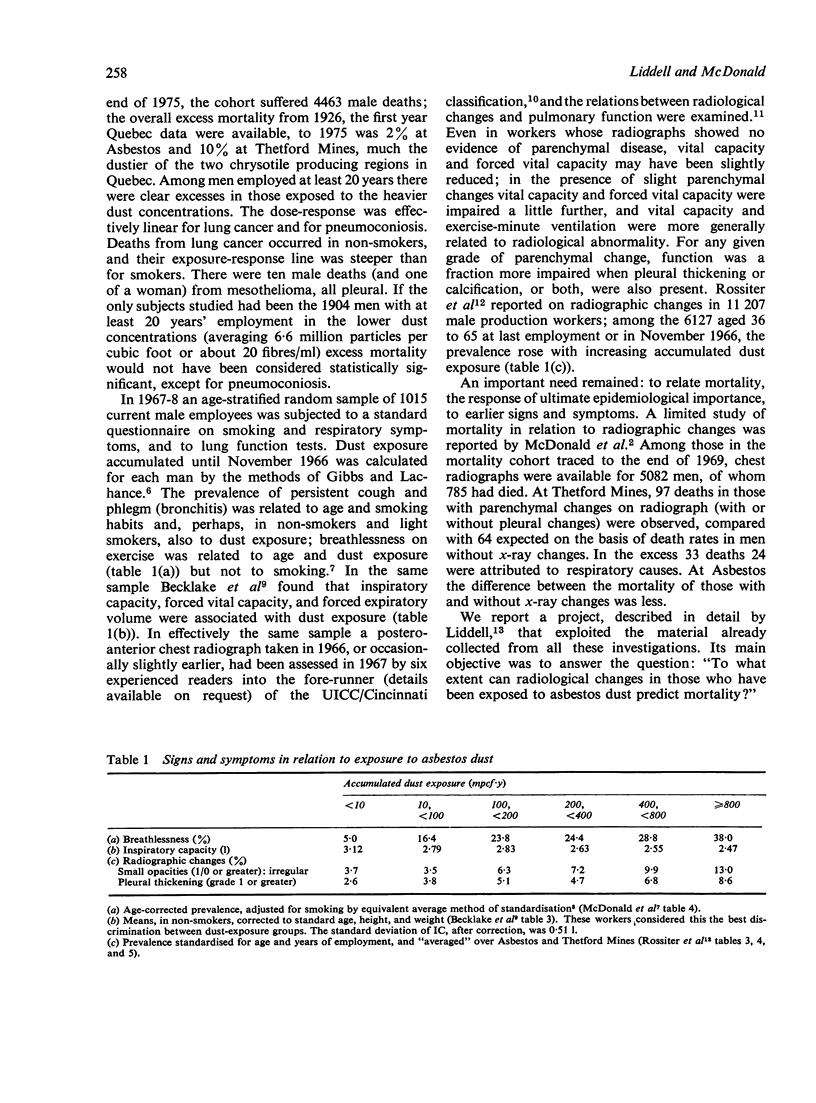
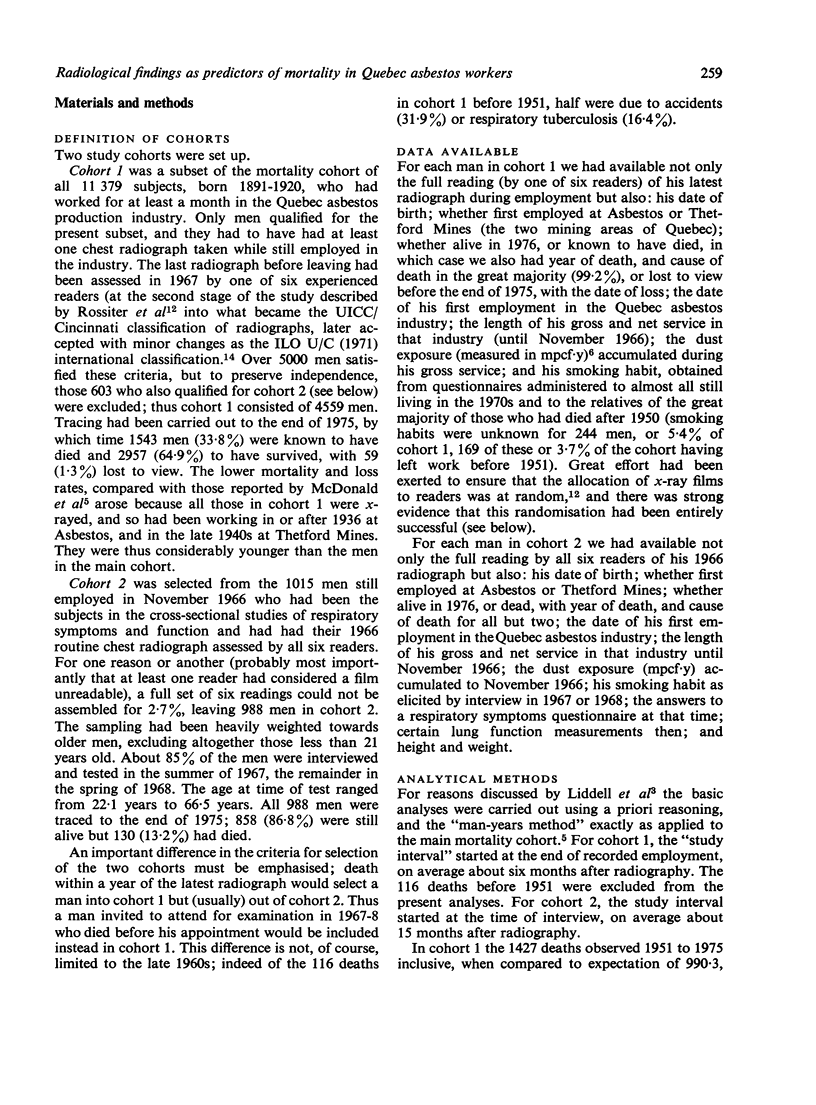
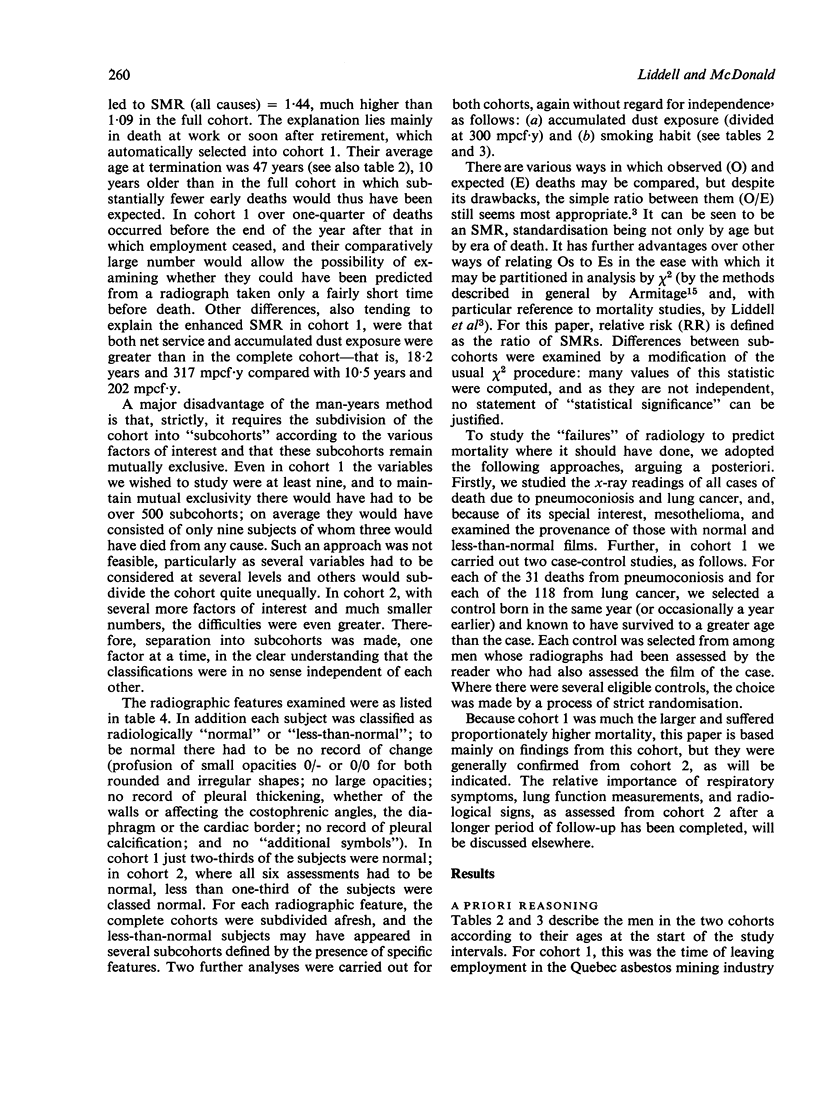
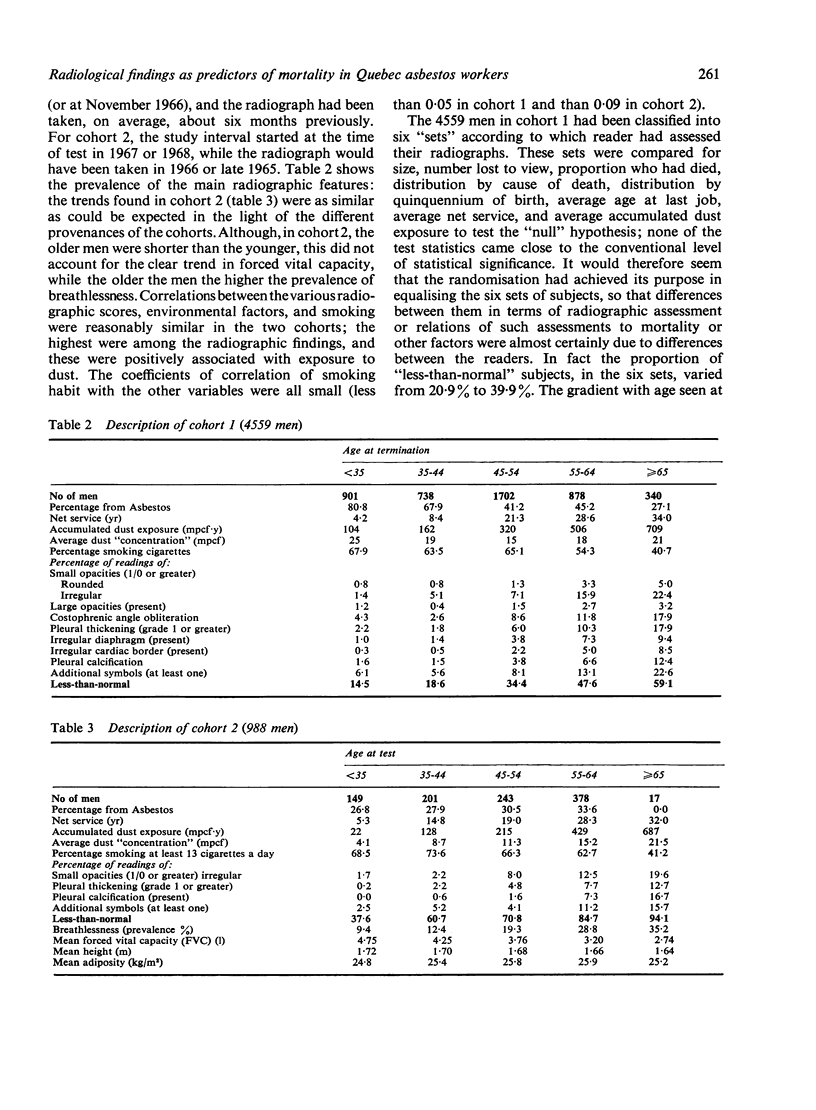
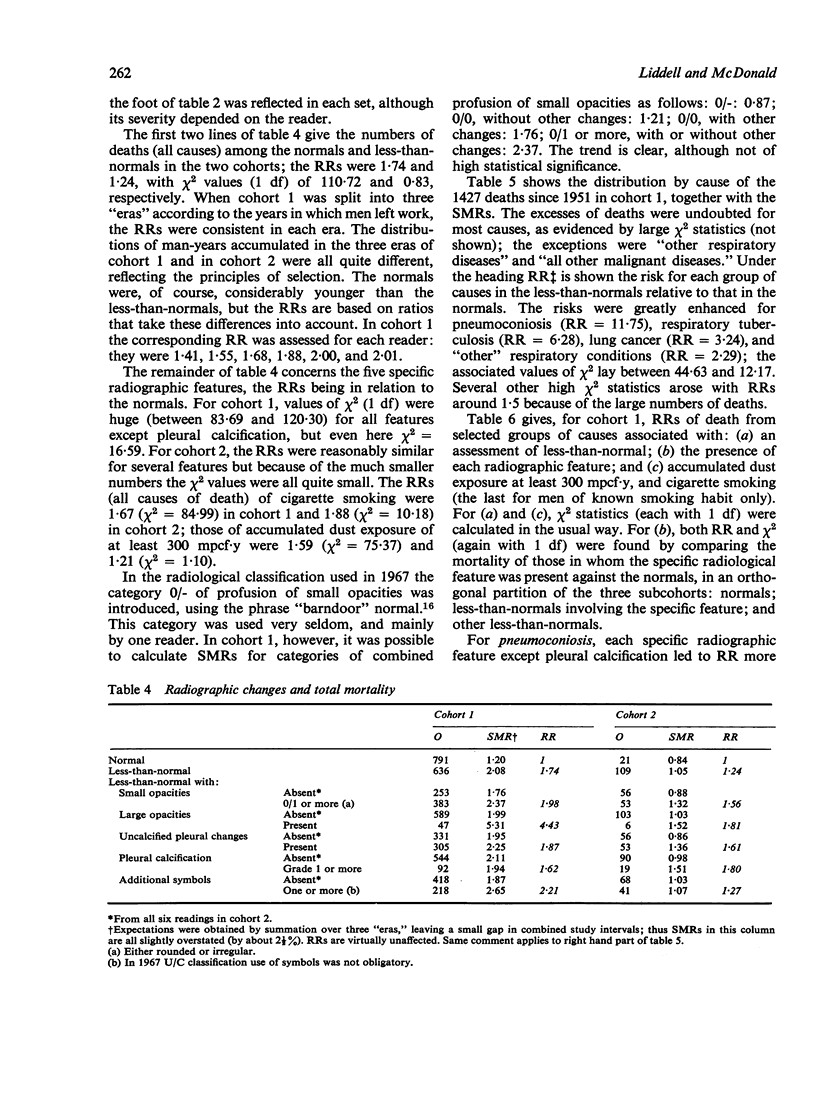
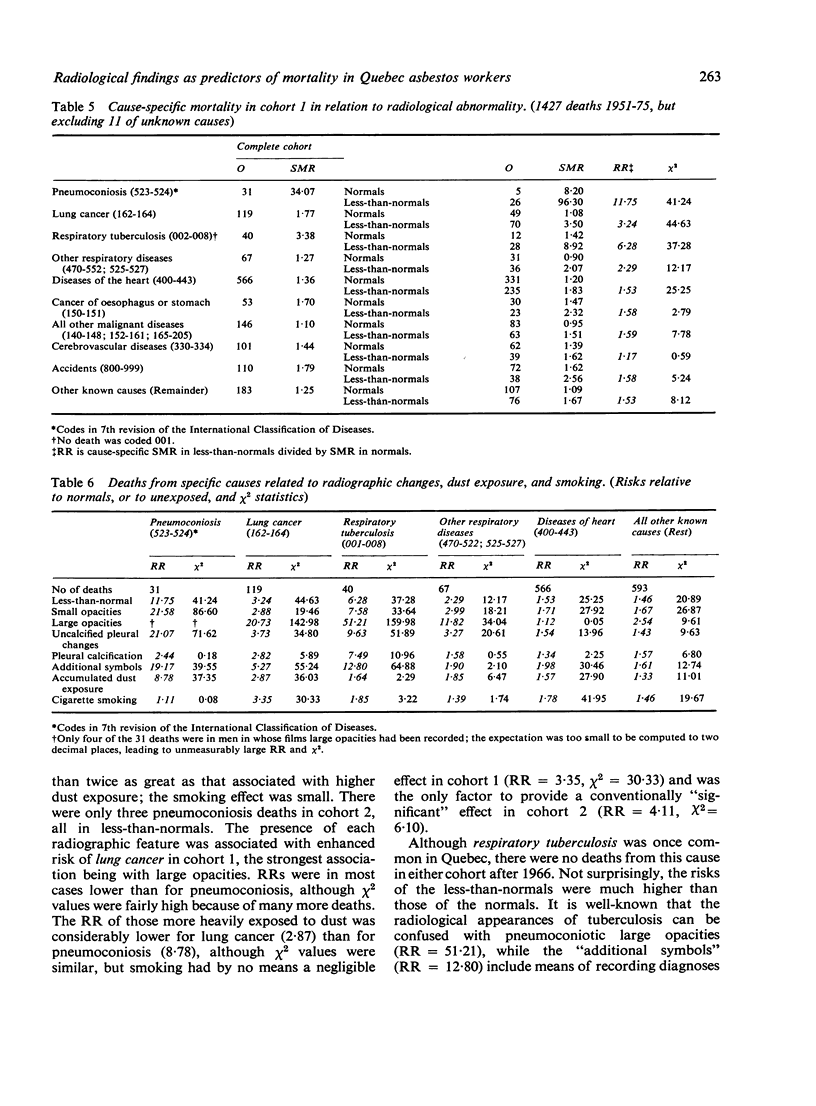
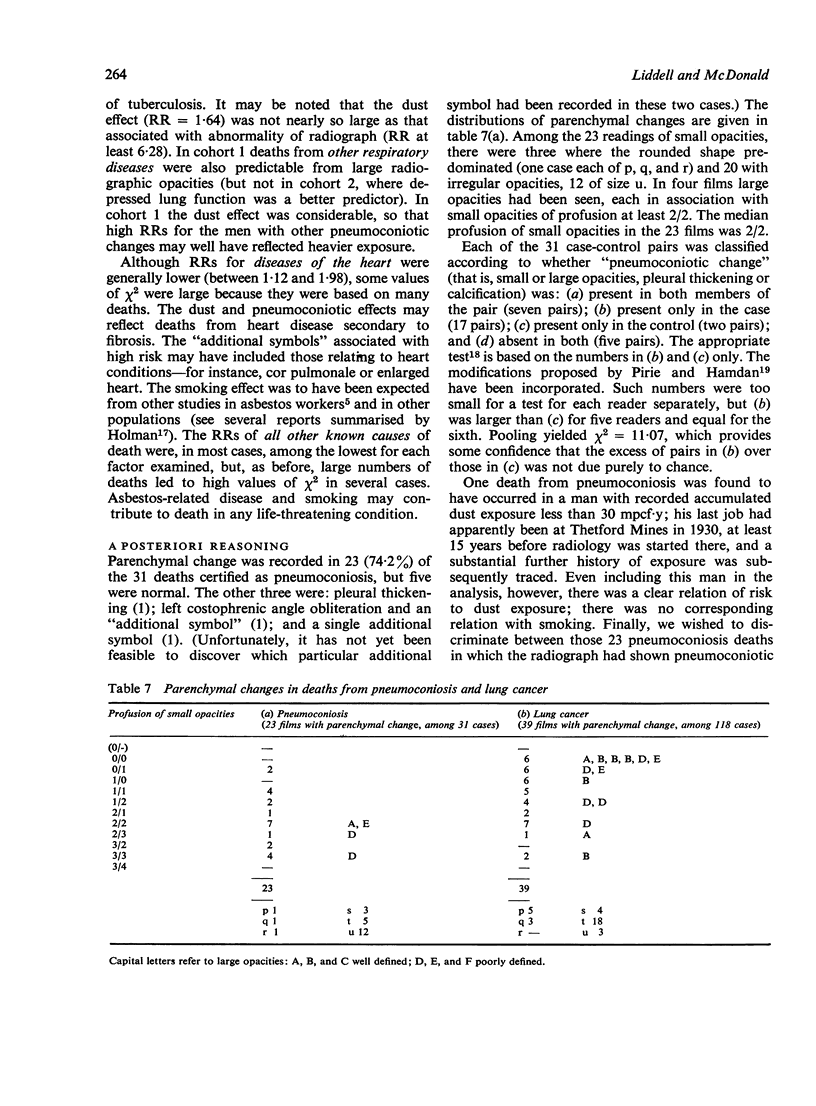
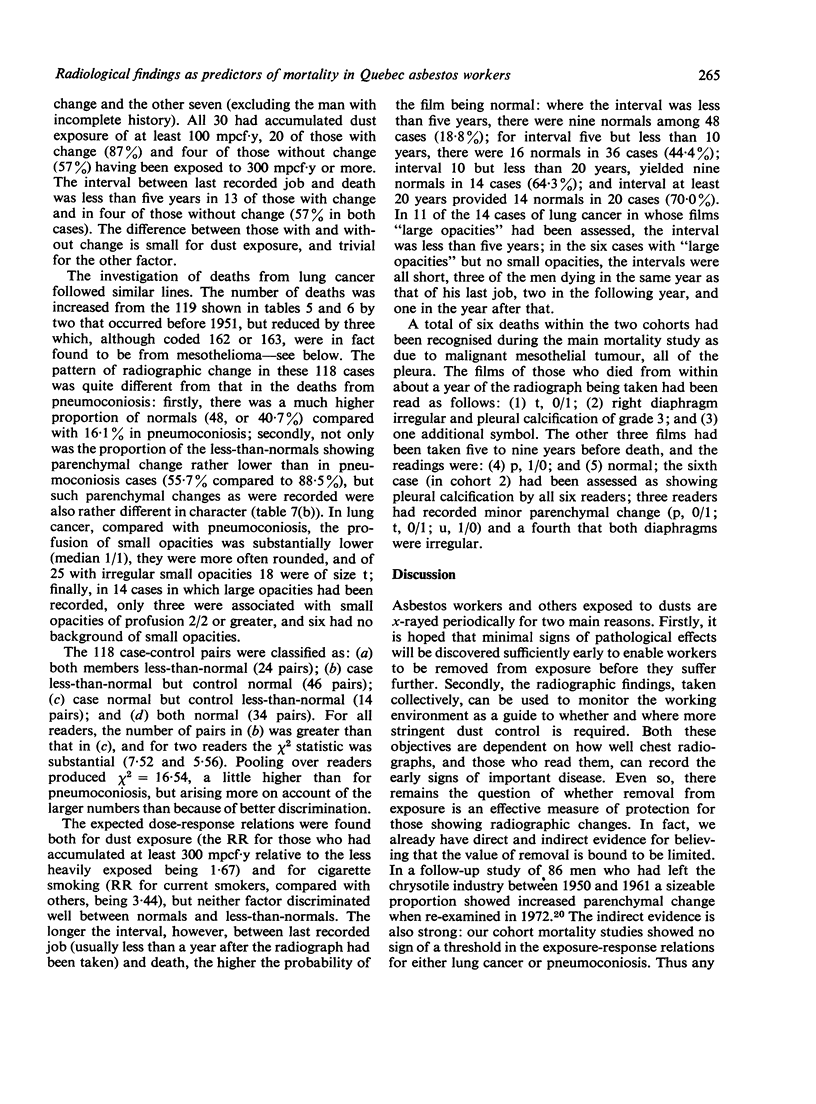
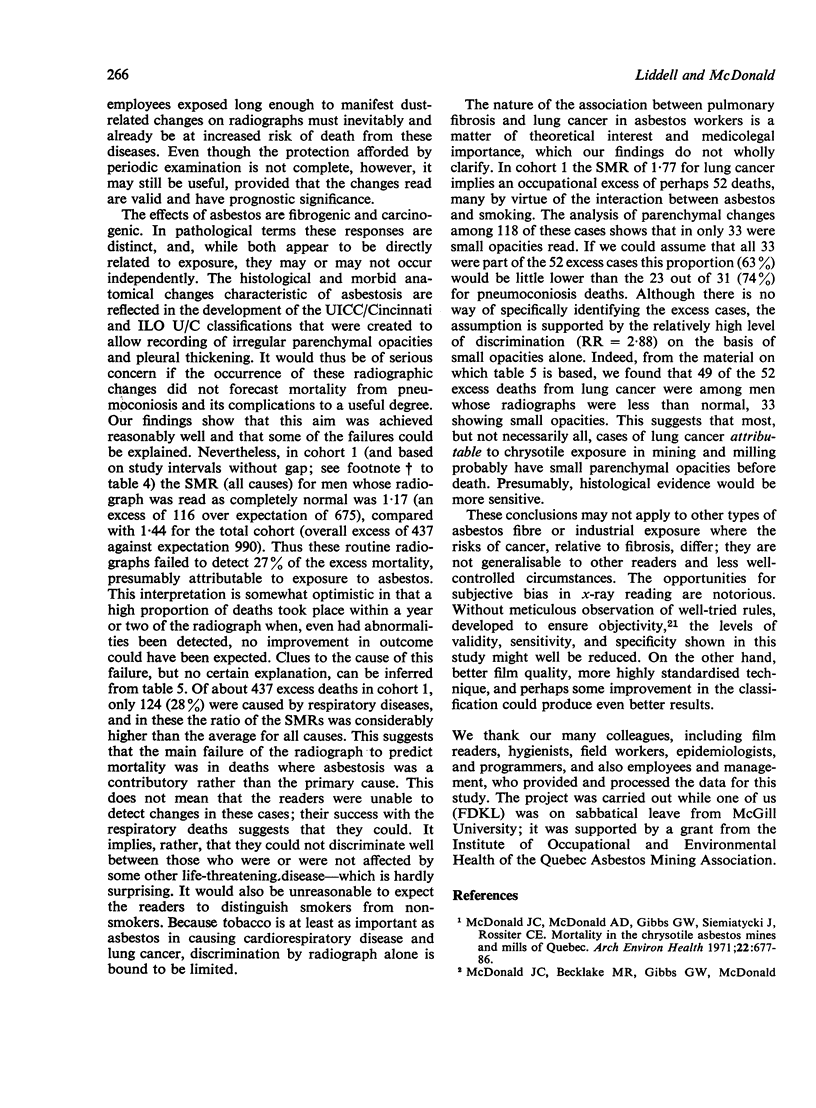
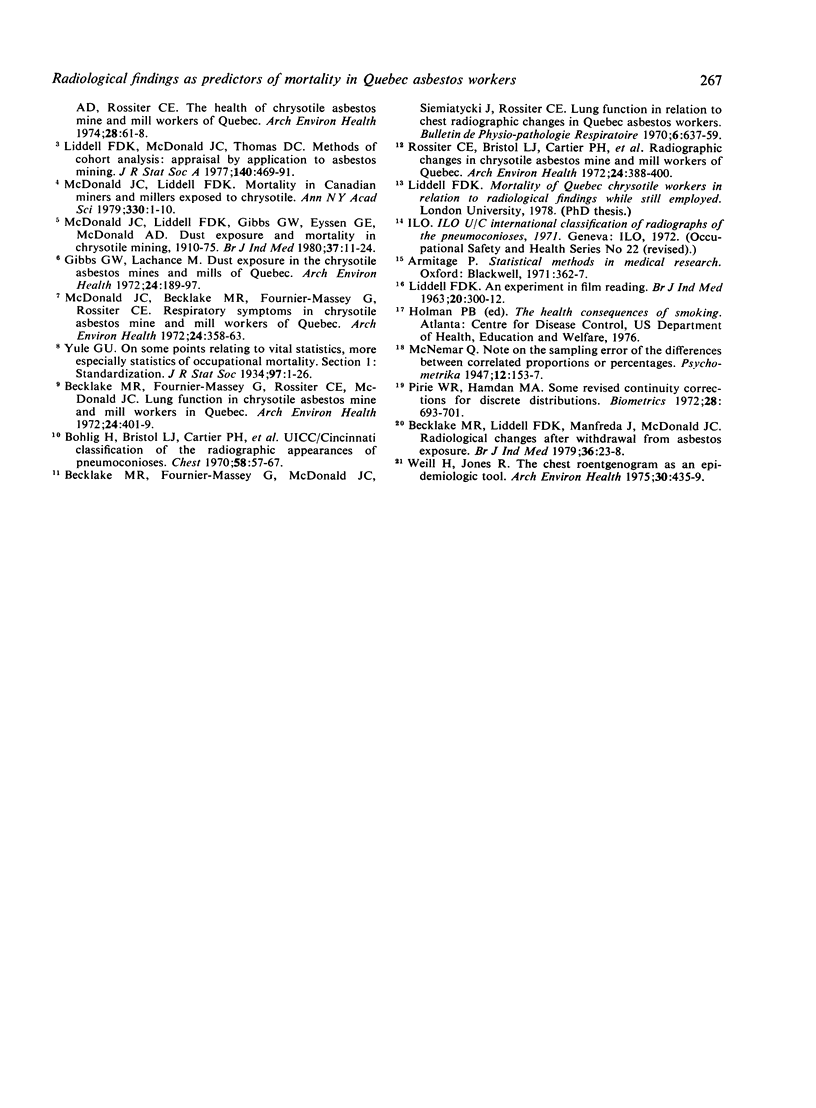
Selected References
These references are in PubMed. This may not be the complete list of references from this article.
- Becklake M. R., Fournier-Massey G., McDonald J. C., Siemiatycki J., Rossiter C. E. Lung function in relation to chest radiographic changes in Quebec asbestos workers. I. Methods, results and conclusions. Bull Physiopathol Respir (Nancy) 1970 Jul-Sep;6(3):637–659. [PubMed] [Google Scholar]
- Becklake M. R., Fournier-Massey G., Rossiter C. E., McDonald J. C. Lung function in chrysotile asbestos mine and mill workers of Quebec. Arch Environ Health. 1972 Jun;24(6):401–409. doi: 10.1080/00039896.1972.10666115. [DOI] [PubMed] [Google Scholar]
- Becklake M. R., Liddell F. D., Manfreda J., McDonald J. C. Radiological changes after withdrawal from asbestos exposure. Br J Ind Med. 1979 Feb;36(1):23–28. doi: 10.1136/oem.36.1.23. [DOI] [PMC free article] [PubMed] [Google Scholar]
- Gibbs G. W., Lachance M. Dust exposure in the chrysotile asbestos mines and mills of Quebec. Arch Environ Health. 1972 Mar;24(3):189–197. [PubMed] [Google Scholar]
- LIDDELL F. D. AN EXPERIMENT IN FILM READING. Br J Ind Med. 1963 Oct;20:300–312. doi: 10.1136/oem.20.4.300. [DOI] [PMC free article] [PubMed] [Google Scholar]
- McDonald J. C., Becklake M. R., Fournier-Massey G., Rossiter C. E. Respiratory symptoms in chrysotile asbestos mine and mill workers of Quebec. Arch Environ Health. 1972 May;24(5):358–363. doi: 10.1080/00039896.1972.10666104. [DOI] [PubMed] [Google Scholar]
- McDonald J. C., Liddell F. D., Gibbs G. W., Eyssen G. E., McDonald A. D. Dust exposure and mortality in chrysotile mining, 1910-75. Br J Ind Med. 1980 Feb;37(1):11–24. doi: 10.1136/oem.37.1.11. [DOI] [PMC free article] [PubMed] [Google Scholar]
- McDonald J. C., Liddell F. D. Mortality in Canadian miners and millers exposed to chrysotile. Ann N Y Acad Sci. 1979;330:1–9. doi: 10.1111/j.1749-6632.1979.tb18704.x. [DOI] [PubMed] [Google Scholar]
- McDonald J. C., McDonald A. D., Gibbs G. W., Siemiatycki J., Rossiter C. E. Mortality in the chrysotile asbestos mines and mills of Quebec. Arch Environ Health. 1971 Jun;22(6):677–686. doi: 10.1080/00039896.1971.10665923. [DOI] [PubMed] [Google Scholar]
- Rossiter C. E., Bristol L. J., Cartier P. H., Gilson J. G., Grainger T. R., Sluis-Cremer G. K., McDonald J. C. Radiographic changes in chrysotile asbestos mine and mill workers of Quebec. Arch Environ Health. 1972 Jun;24(6):388–400. doi: 10.1080/00039896.1972.10666114. [DOI] [PubMed] [Google Scholar]
- UICC-Cincinnati classification of the radiographic appearances of pneumoconioses. A cooperative study by the UICC committee. Chest. 1970 Jul;58(1):57–67. [PubMed] [Google Scholar]
- Weill H., Jones R. The chest roentgenogram as an epidemiologic tool. Report of a workshop. Arch Environ Health. 1975 Sep;30(9):435–439. doi: 10.1080/00039896.1975.10666744. [DOI] [PubMed] [Google Scholar]


